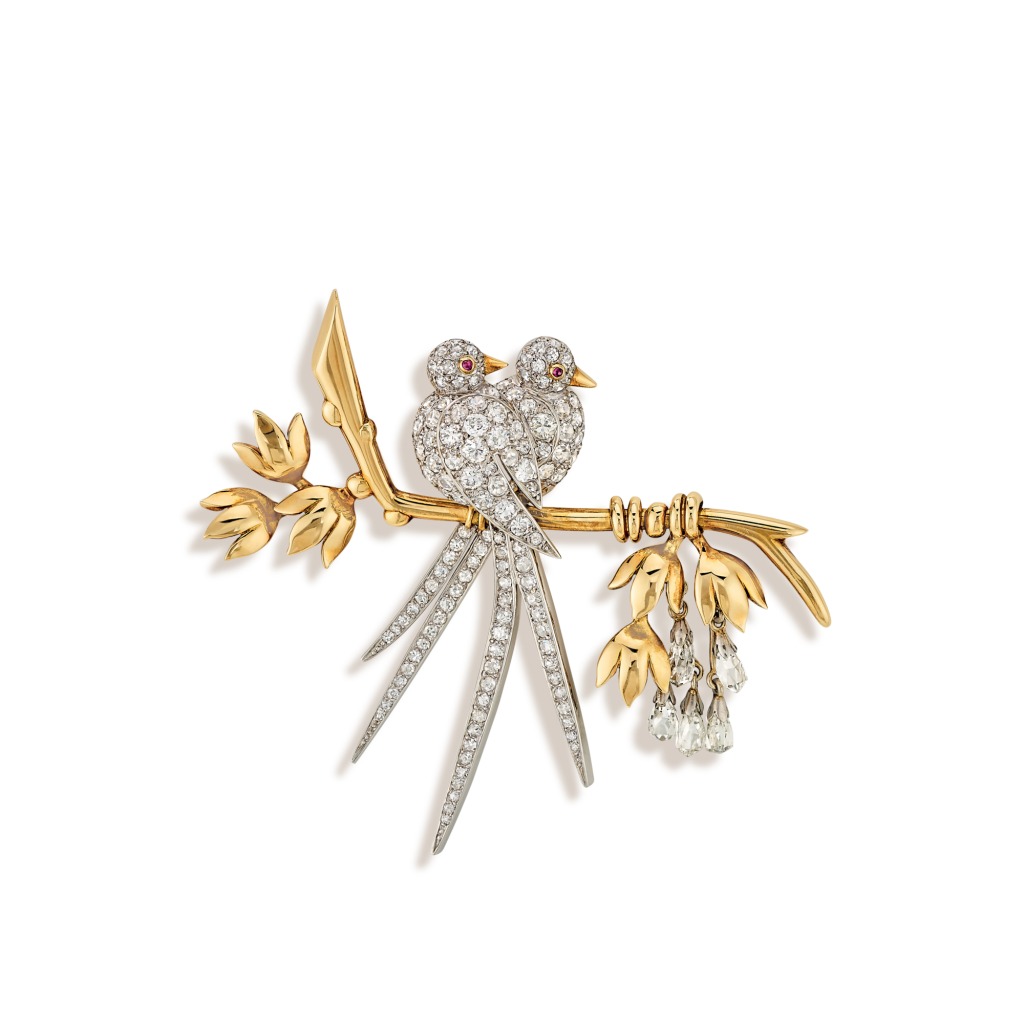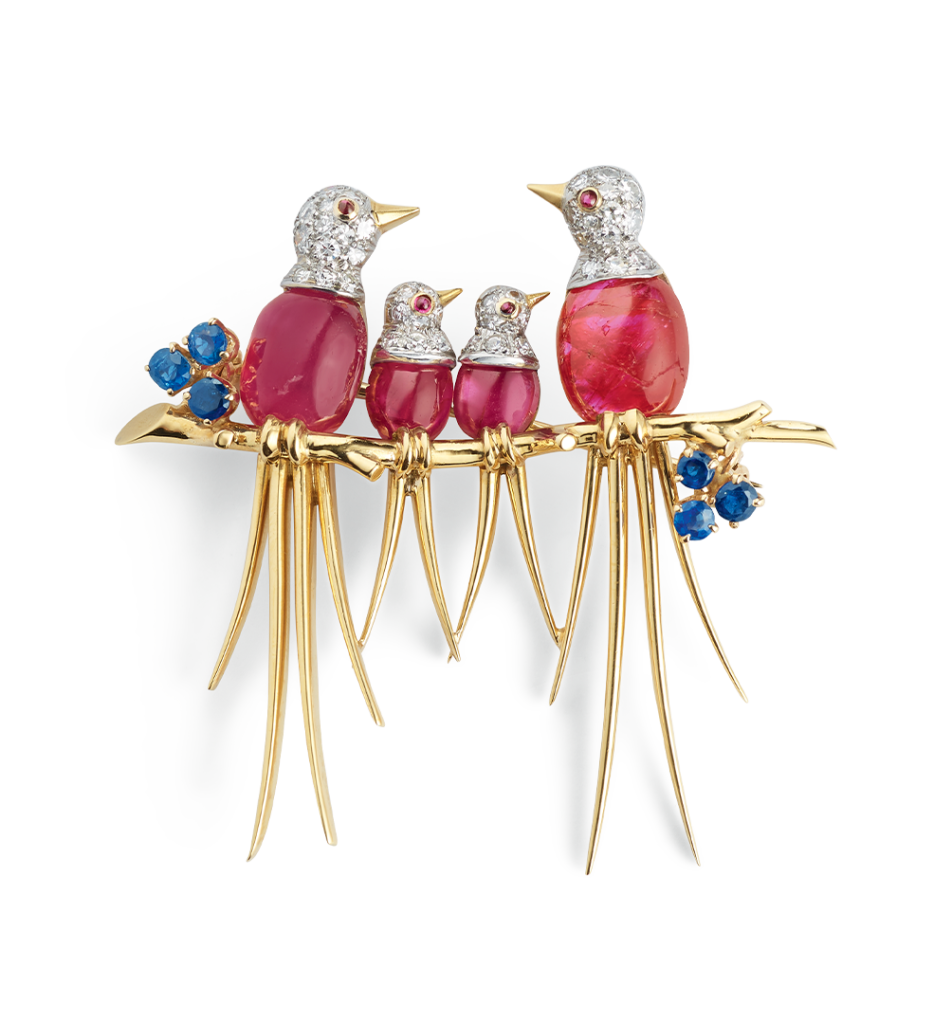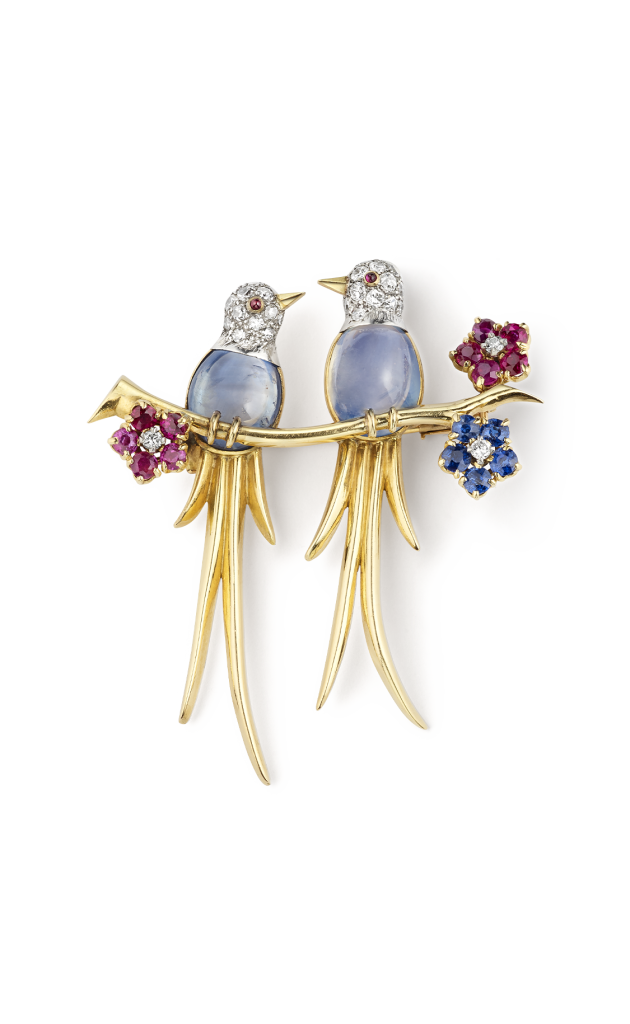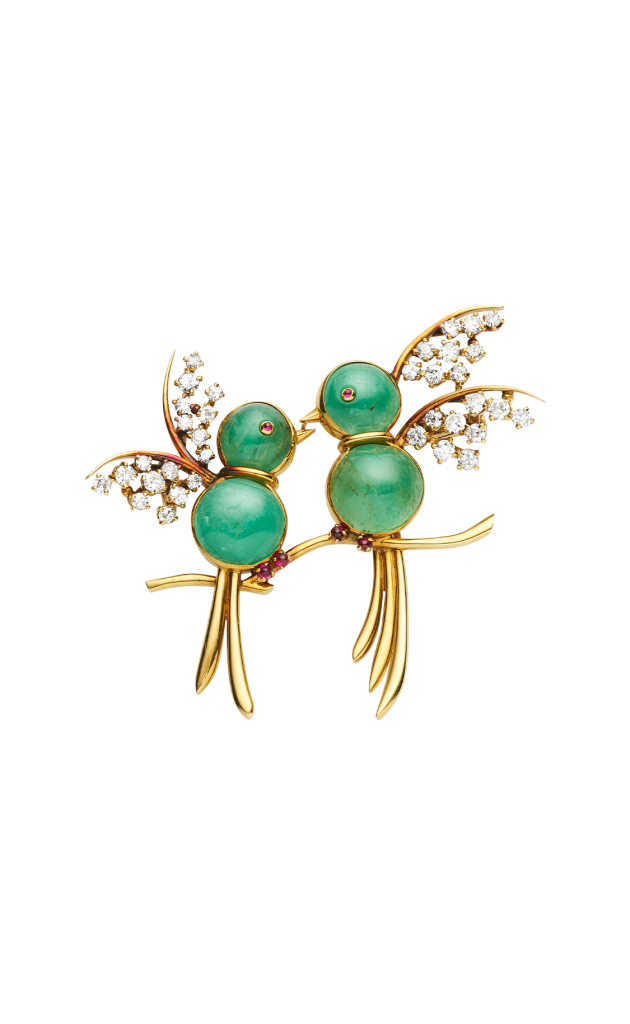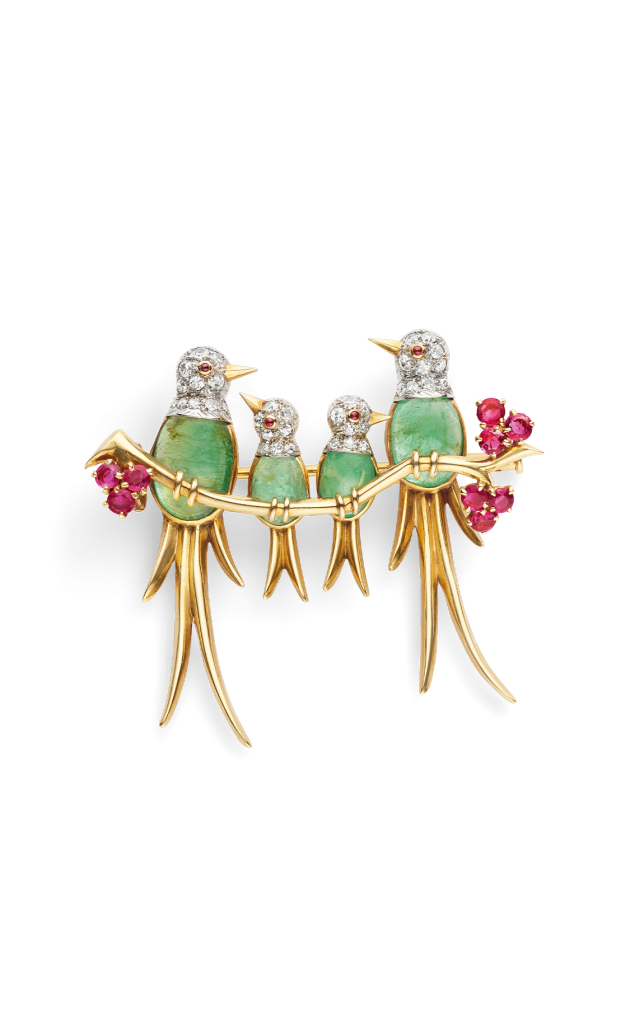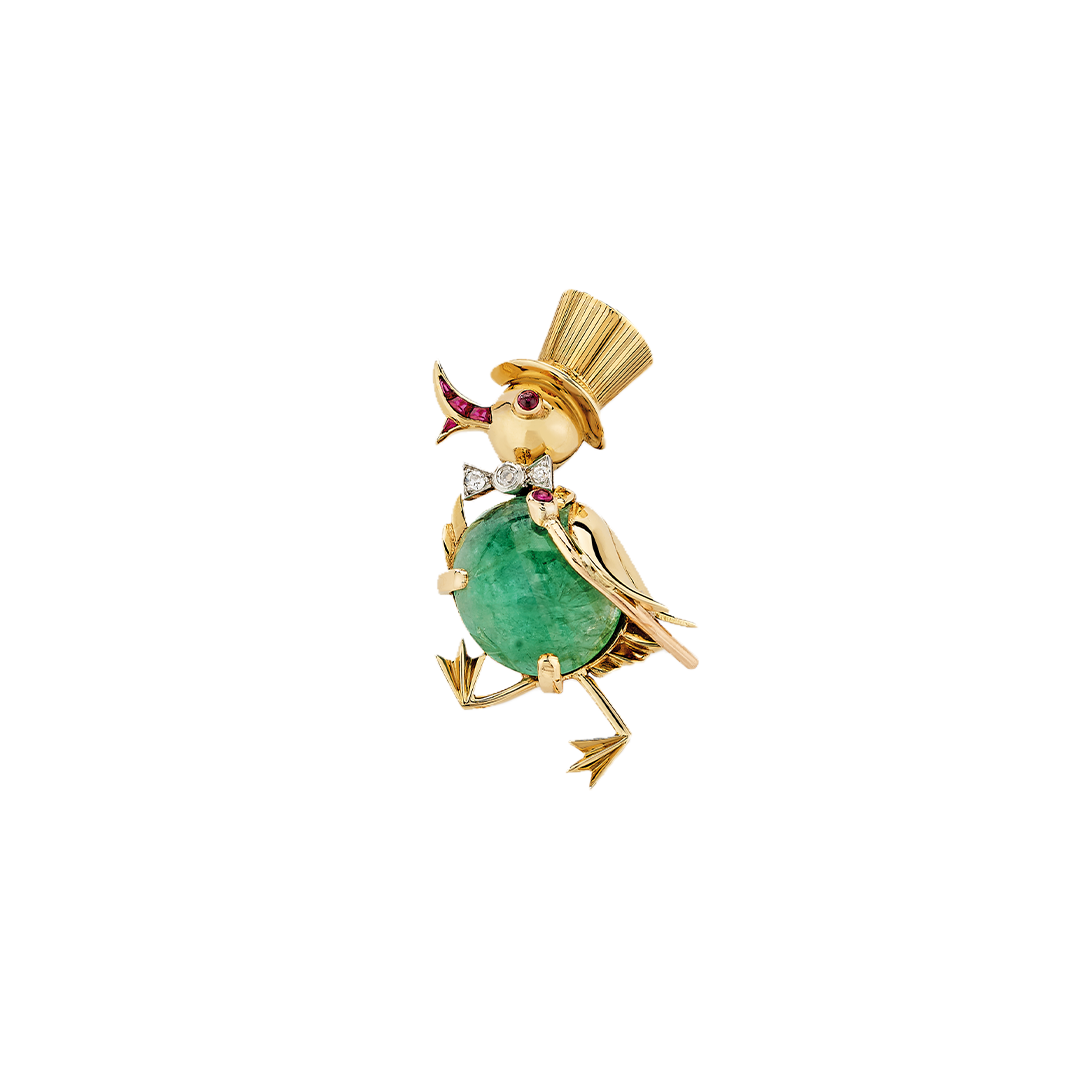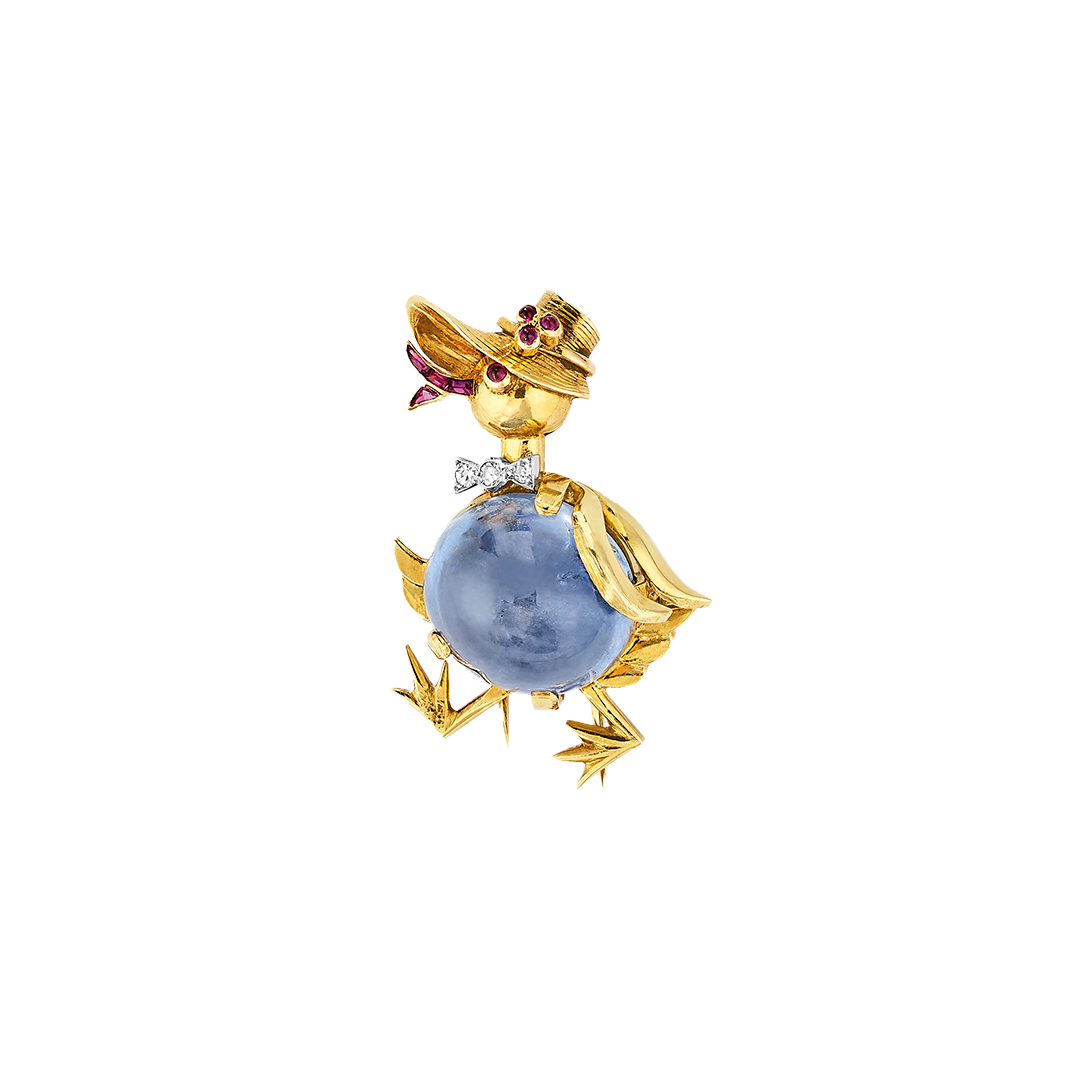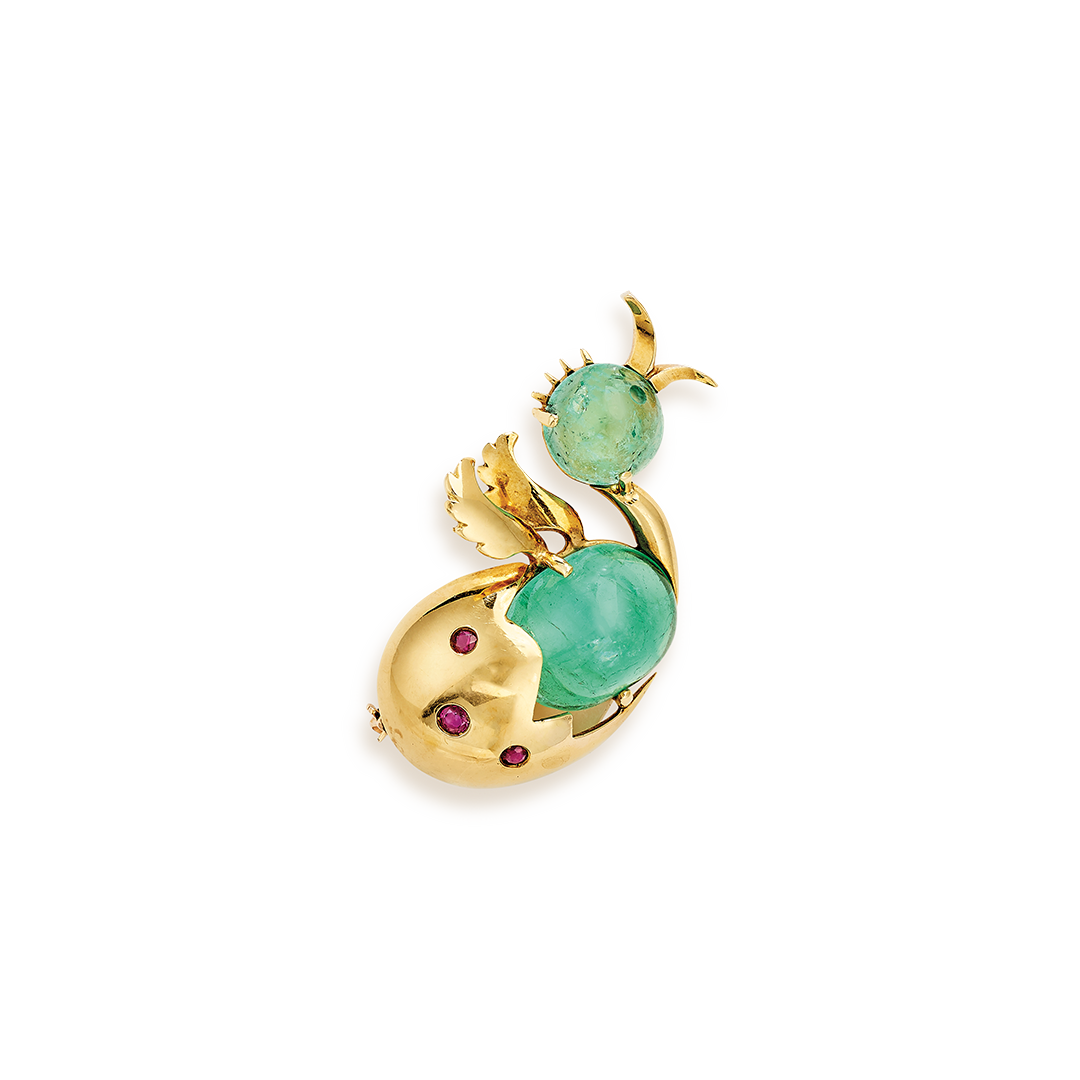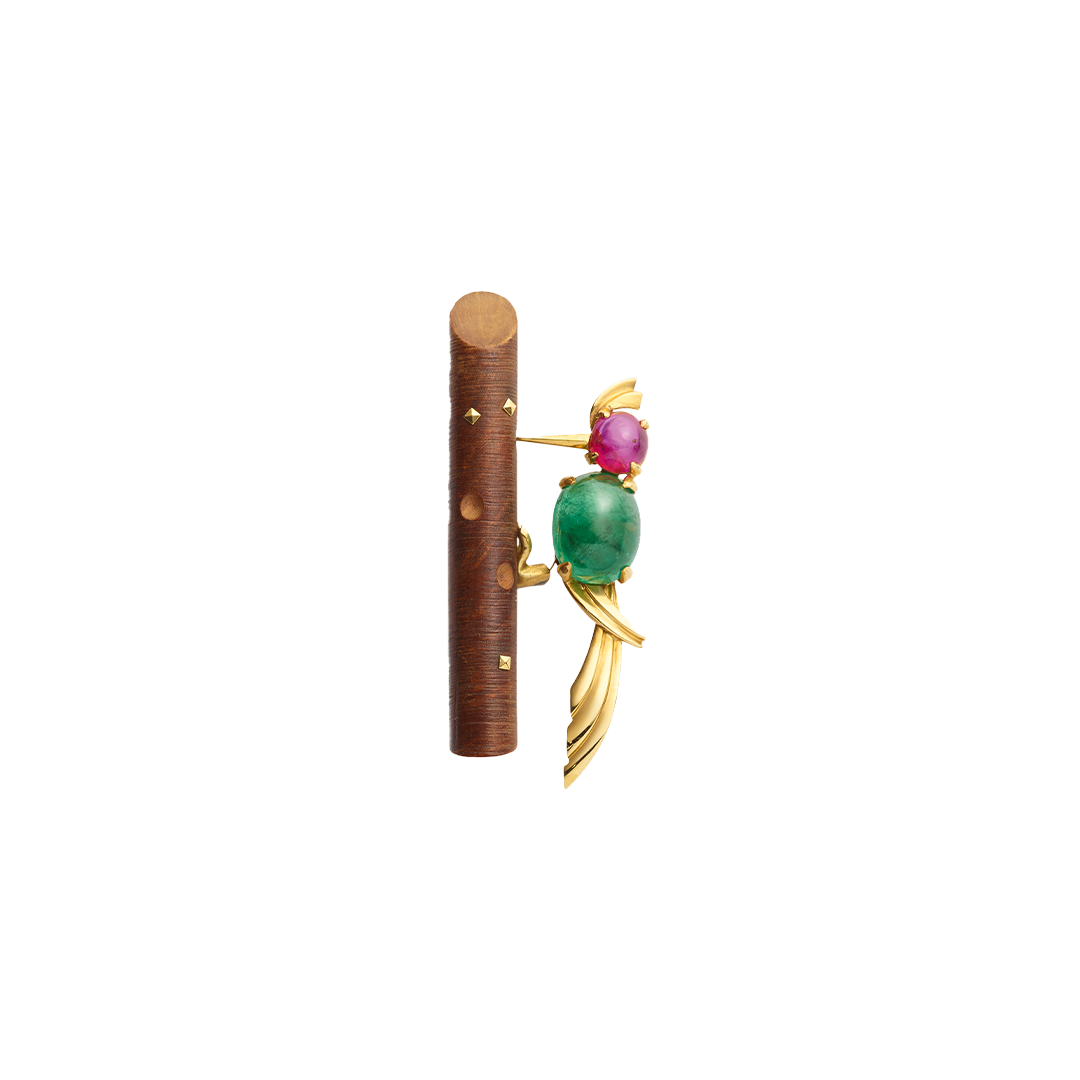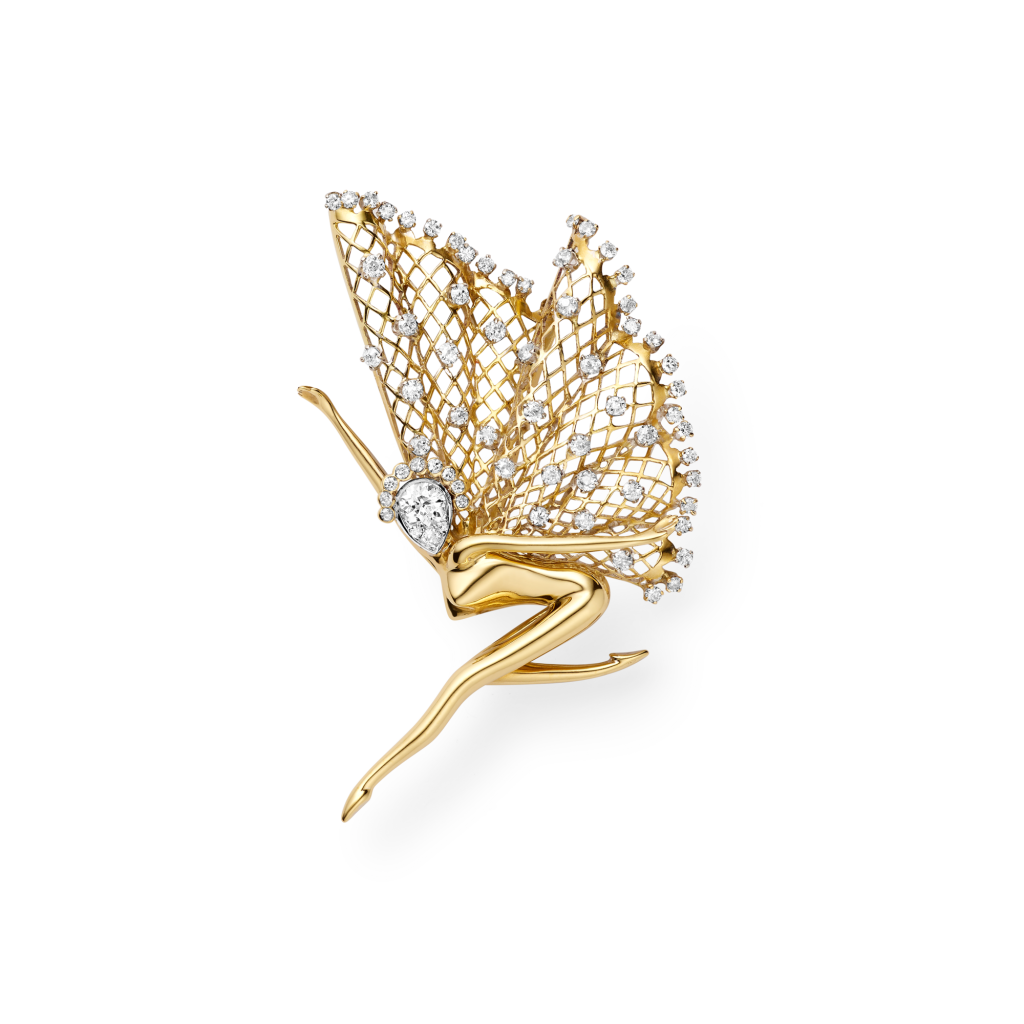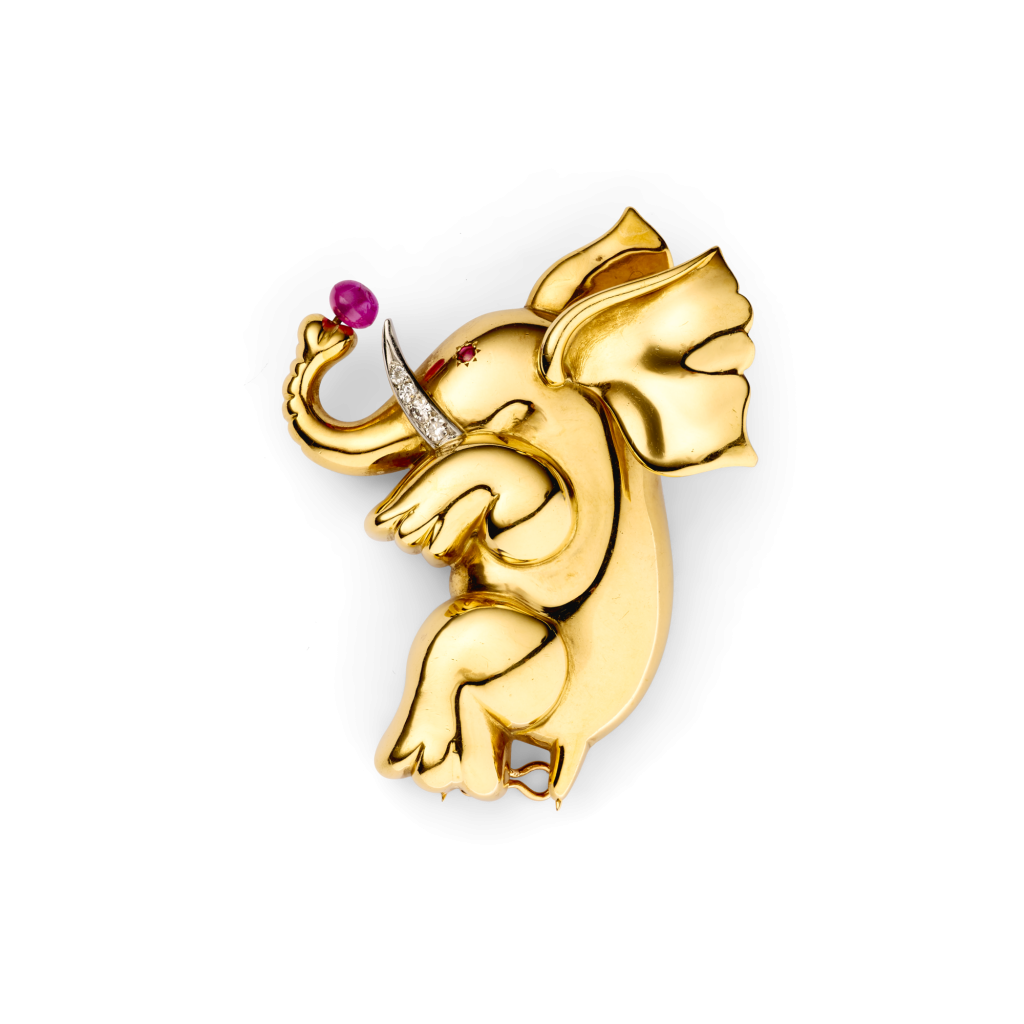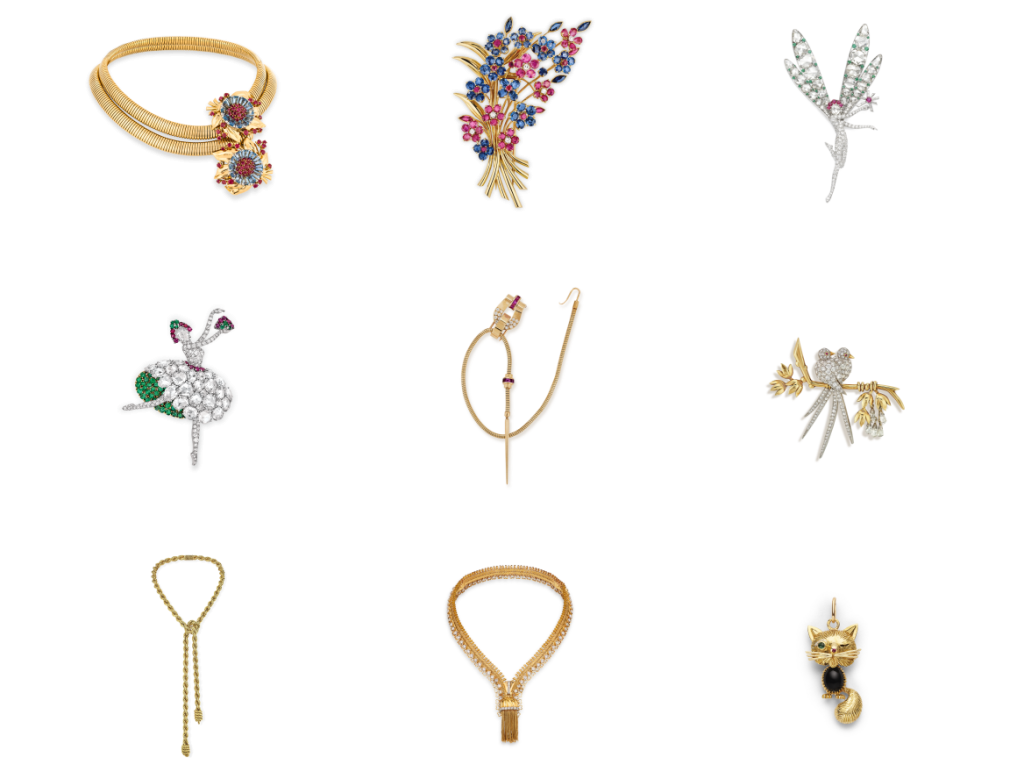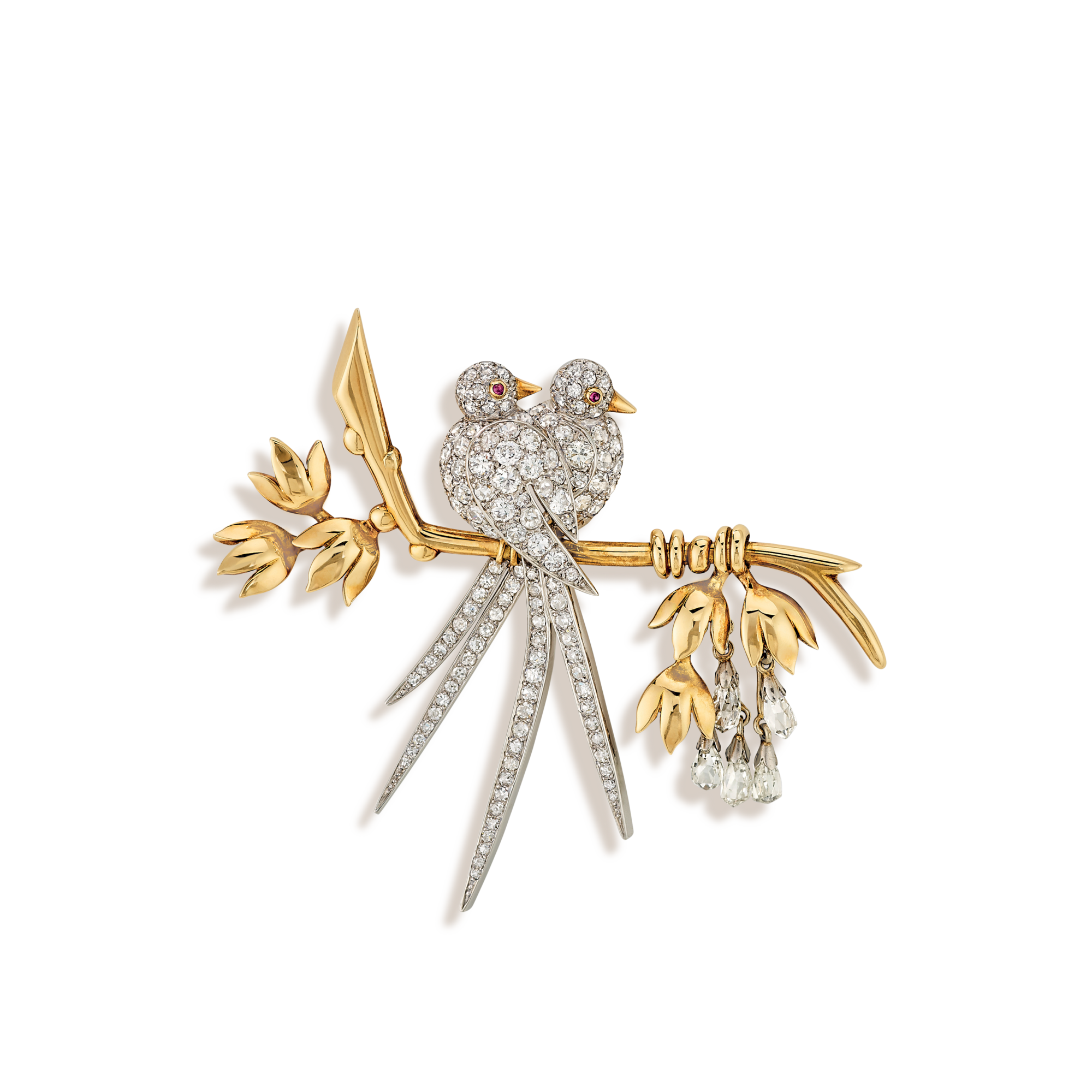
Lovebirds brooch

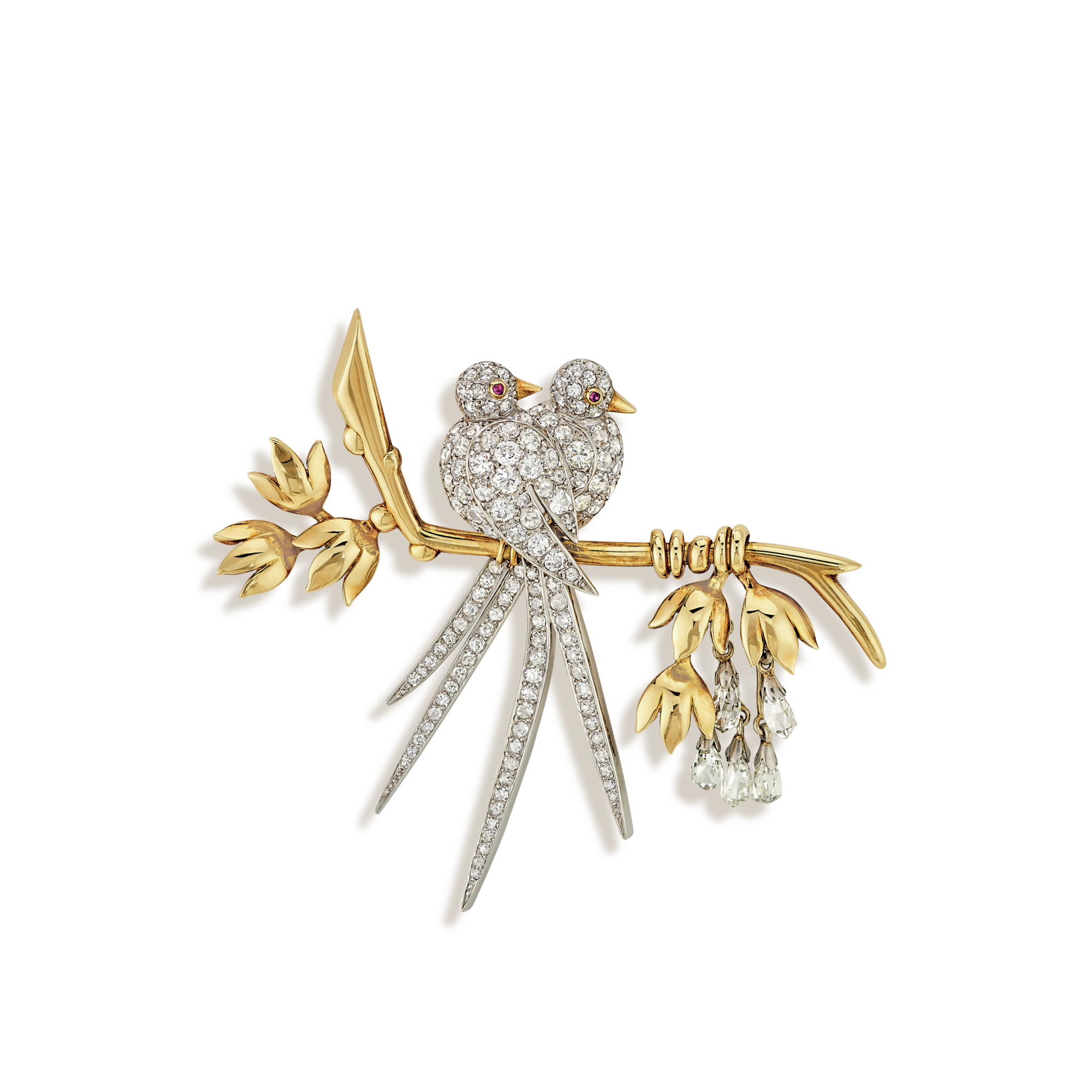
Creation details
- Creation year 1945
- Usage Clip
- Dimensions 50 × 57 mm
The extensive series of Lovebirds brooches, first seen in June 1944, held a special place within the Maison’s animal repertory in the early 1940s.
Its name refers to a small group of parrots renowned for their fidelity in love—they keep the same partner throughout their entire life. A pair of lovebirds in platinum pave-set with brilliant-cut diamonds and bezel-set ruby eyes are perched on a branch of polished yellow gold. Their beaks and feet are in yellow gold. Five briolette-cut diamonds hang down from leaves with simplified outlines.
The bird clips in white diamond jewelry
This example from the Patrimonial Collection is representative of the early brooches featuring birds on a branch. They were typified by the contrasting use of white diamond jewelry and polished yellow gold. The number of birds varied, ranging from a pair to a brood of four. In some models, the branch is replaced or enhanced by a nest of “woven” yellow gold threads, sometimes containing platinum eggs.
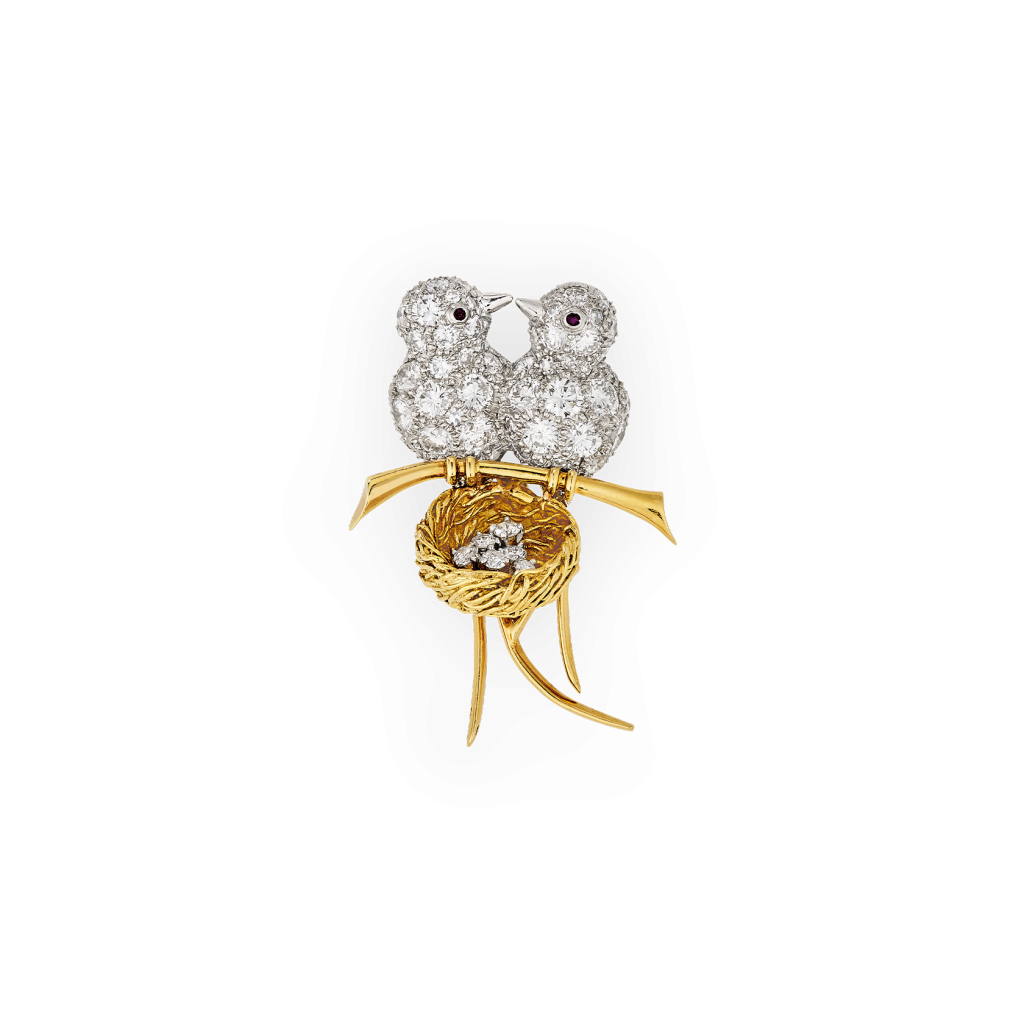
The simplification of bird clips
From August 1945, their design was simplified: the bodies of some birds were depicted with a single oval cabochon, be it ruby, emerald, or sapphire. Their heads and necks were pave-set with brilliants, while their tail feathers were fashioned in polished yellow gold. This rather more sober design allowed for the introduction of color in compositions that until then had only had two colors. The variants multiplied with Lovebirds depicted on elaborate perches with small flowers or in dovecotes.
The animal repertoire of the 1940s
Cabochon gems were used to depict the bodies of animals on many clips and brooches after 1945. These include the Doe clip, where a turquoise suggests the volume of the deer’s body, followed a few months later by the Rabbit clip, the Squirrel clip, and the Cat clip. Some of these clips, such as the Drake, Duck, and Pelican, sport sartorial accessories, and bow ties and hats of various forms adorn many of the Bird clips, highlighting the wealth of the animal repertory in the 1940s.
A peaceful representation of nature
This iconography can be linked to the success of animated films from the 1930s, which continued throughout the following decade. The world of cartoons, with the flexible silhouettes of its characters and animals, had a major influence on the art world and on the public’s perception. This series of brooches symbolizes affection, and marital and filial love, uniting, on occasion, “father, mother, and two children,” as can be seen in some archive records. In addition to its esthetic aspect, the Lovebirds jewelry, which continued to be produced until the 1960s, also had powerful emotional value.
To go deeper
